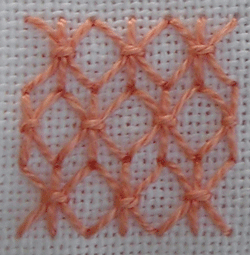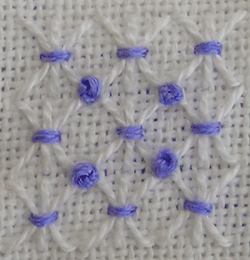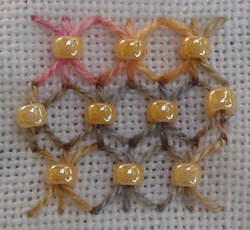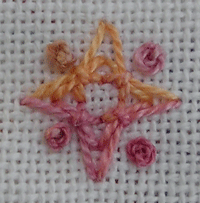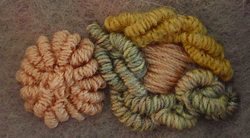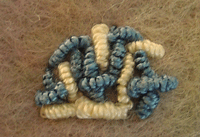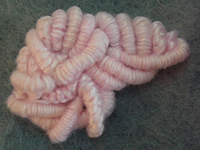I was practicing on the arrowhead stitches while away from home. I used up my red thread and found I hadn’t any more in my travel pack. “No problem,” I thought, “I’ll move on to something else and finish up when I get home.” How did that red thread get in my travel pack? And how could I have taken the last of it with out noticing? I’m sure it’s hiding somewhere, but where?
Here’s the unfinished work.
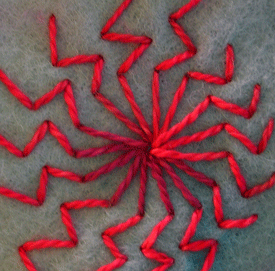
Well, almost all of it. Because it was unfinished it was out of kilter. I thought, “it’s a perfect time to play with cropping.” In my design class last year, one of the important things my teacher stressed was you decide were the borders are. I’m definitely not good at it. My papers came back corrected a lot of times–and I should add very kindly so. So I had fun with a few trials on this piece. Please feel free to skip over the next three photos, if this doesn’t interest you. Beyond them I have a few more experiments with the arrowhead stitch.
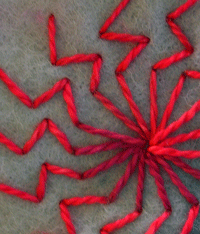
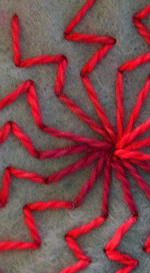
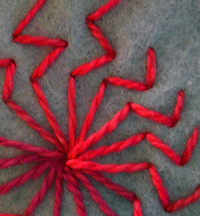
The other fun part is deciding what direction. For instance, what a difference if the middle photo were rotated a quarter turn counterclockwise. Or the last one a quarter, clockwise.
Here’s the rest of my practice.
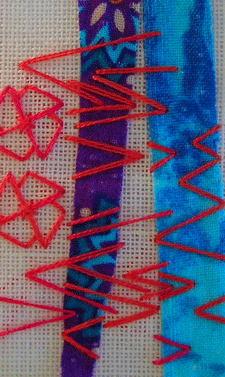
Oops, once I started cropping, I didn’t know when to stop.
Here I am back to normal.
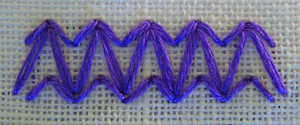
Threaded arrowheads, an idea from Sharon b‘s stitch dictionary. My second take on this is that it would have been more effective with thicker thread or a ribbon as Sharon suggests. I plan to revisit some lacing ideas before the week is out.
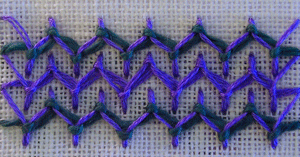
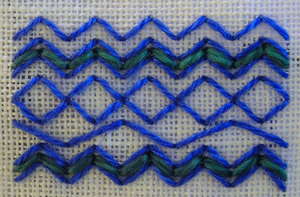



 Posted by Elizabeth
Posted by Elizabeth 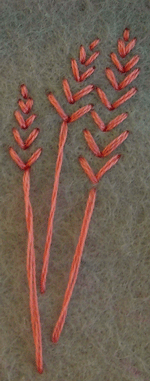
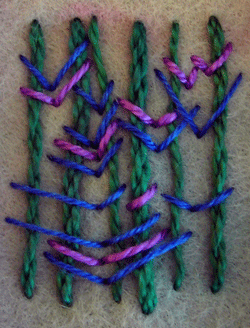
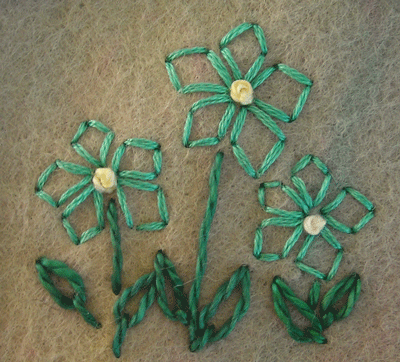
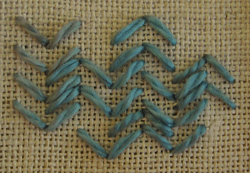
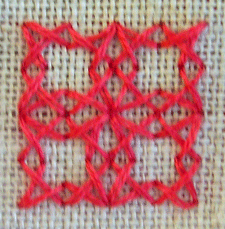


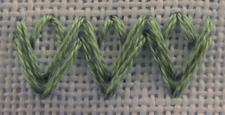
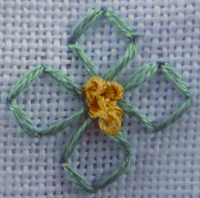 How can I be making such poor French knots again after such recent practice? It looks like I’m still at square one with them.
How can I be making such poor French knots again after such recent practice? It looks like I’m still at square one with them.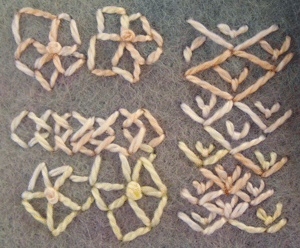
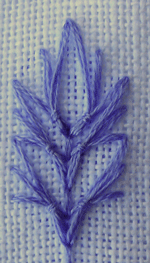
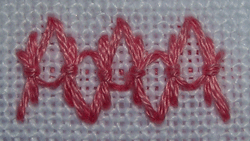
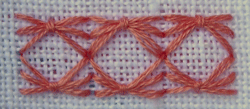
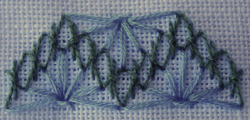
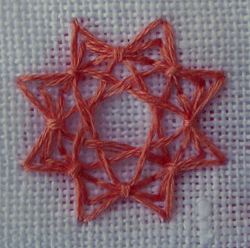


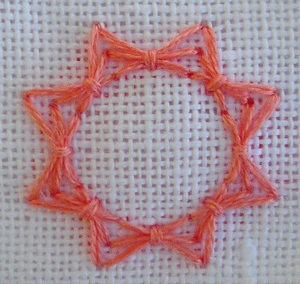
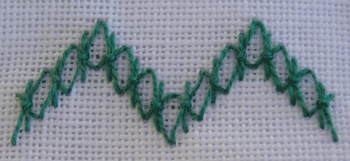


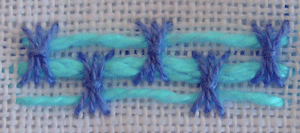
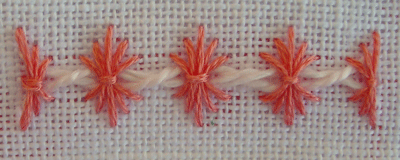
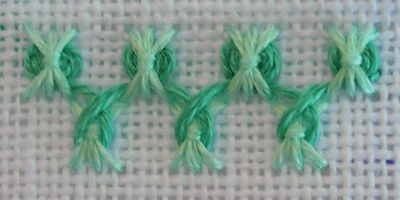

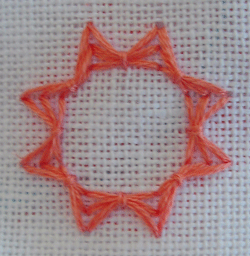

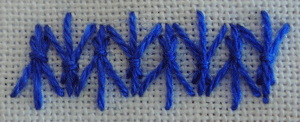
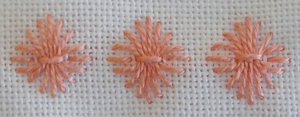
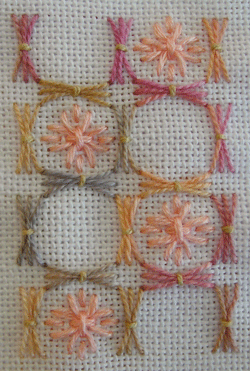
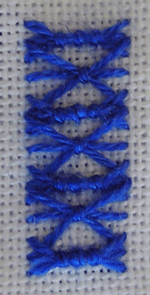

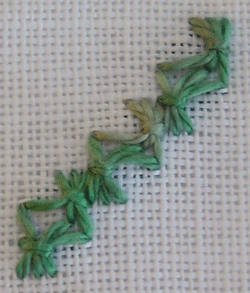
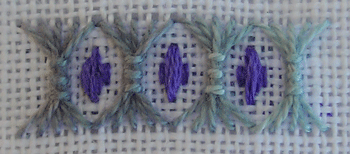
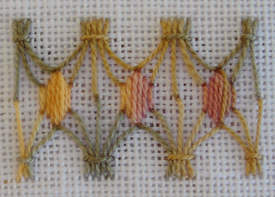
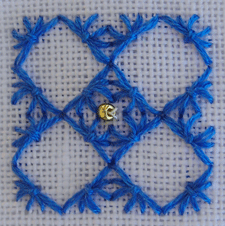 Oops, almost looks like I was seeing about turning beads on their heads, too. No! Just forgot to check my bead before I snapped the photo.
Oops, almost looks like I was seeing about turning beads on their heads, too. No! Just forgot to check my bead before I snapped the photo.
